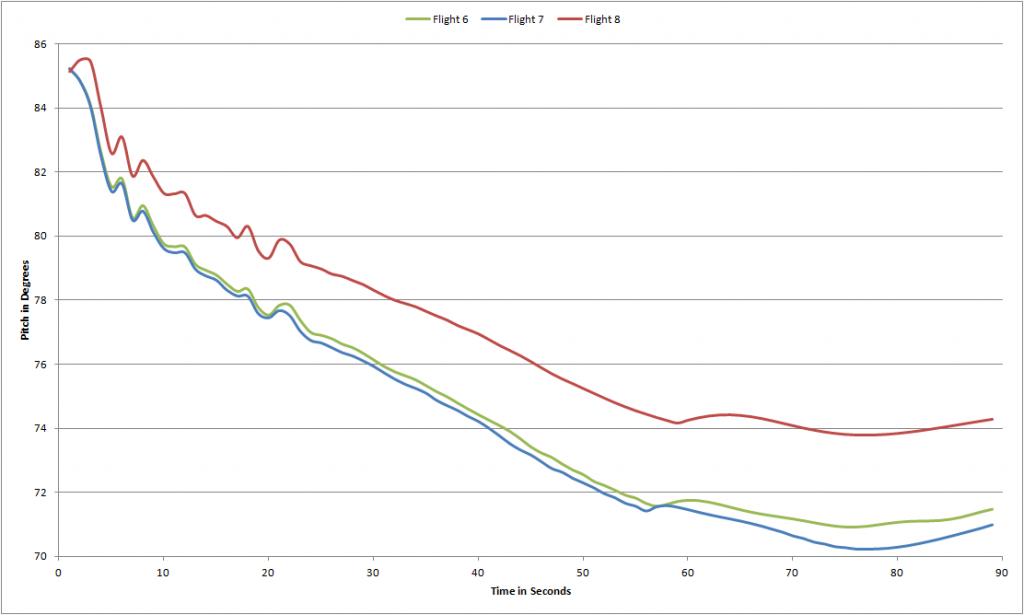 After the failure of the previous mission, the payload canisters were redesigned and built to stronger specifications. In addition to being able to withstand greater pressures and heat, the doors of the containment units were able to indicate to Mission Control whether or not they were properly sealed. If indeed the failure of the payload was the cause of the re-entry breakup then this time we had everything covered to help ensure a successful mission. Unfortunately this second attempt was delayed over 5 months thanks mainly to the Monolith EM field. After an initial delay due to weather, we were finally able to launch last week. The mission was successful in proving the Mystery Goo units could now survive re-entry however the payload itself was not able to be recovered, ultimately causing this mission to be labeled another failure.
After the failure of the previous mission, the payload canisters were redesigned and built to stronger specifications. In addition to being able to withstand greater pressures and heat, the doors of the containment units were able to indicate to Mission Control whether or not they were properly sealed. If indeed the failure of the payload was the cause of the re-entry breakup then this time we had everything covered to help ensure a successful mission. Unfortunately this second attempt was delayed over 5 months thanks mainly to the Monolith EM field. After an initial delay due to weather, we were finally able to launch last week. The mission was successful in proving the Mystery Goo units could now survive re-entry however the payload itself was not able to be recovered, ultimately causing this mission to be labeled another failure.
The Flight
It was a nominal ascent to space, the newly-refactored AFCS functioning perfectly as it staged the rocket out of the atmosphere. Once in space the lower Goo unit cycled open to expose the sample to normal levels of radiation in low space. Once past 350km and nearing the known lower edge of the radiation belt, the Goo units switched, with the top one now being exposed the entire duration in which the rocket was inside the belt. The payload reached an apokee of 507km, 12km higher than the previous flight, before plummeting back towards the atmosphere. Once out of the radiation belt the lower canister was once again exposed while the upper one sealed shut and indicated to Mission Control that it was in fact locked. At 90km the lower canister also indicated it had properly closed and locked.
The rocket entered the atmosphere engine-down as proper, with no precession in its spin to present any of the upper portions directly towards the heat of re-entry friction. Plasma ionization soon cut off communications and the rocket fell below the horizon before signal could be regained. The recovery vessel however was still able to see the rocket over the horizon when it came out of comm blackout and continued to receive telemetry data. Unfortunately the ship was stationed 300km downrange under where the last rocket had come down and this one was falling short by about 80km. This meant even though the ship had begun closing the distance shortly after the rocket entered space and its trajectory was determined, signal was cut by the horizon before splashdown. The final transmissions before that did indicate the parachute had been deployed and was slowing the rocket down properly, so everyone was hopeful.
After nearly an hour and a half the recovery vessel reached the area under which the last known location was transmitted from. Listening for a ping from the radio locator beacon the ship heard nothing. Had the rocket still been afloat on the surface or even partially submerged, the locator beacon battery still had several hours of life left in it. The recovery ship spent an hour searchig through a 5km2 area attempting to make a visual sighting to no avail.
The Analysis
The one major issue for this mission was the ascent angle being more vertical than expected. As you can see in the graph below, the rocket left the pad pitched upwards a great deal more than normal when compared to the previous two launches.

It’s very cool to see that despite the anomalous initial launch the pitch follows a normal pattern of ascent
The cause was apparent after the pad inspection got underway and significant damage was noticed on the top rail that holds the second stage booster. Review of launch footage shows that the wider lower booster scraped along it during the initial ascent. Thankfully it was not a serious blow and the lower booster has a thick skin so there was no rupture. Instead it just rotated the rocket upwards and sent it on a higher parabolic arc than we anticipated when planning the location of the recovery zone.
The upper rail slightly overhangs the lower booster but when the rocket is launched it detaches and drops just enough as the lower booster is lit that the vehicle does not impact the launch base. This is the first occurrence of such a strike for the Mk6 Block II and although the latching mechanism on the rail was damaged engineers suspect it had become sticky and did not open fast enough. This would have caused the lower end to swing down faster, standing the rocket up straighter and keeping the rail in the way of the lower booster. The whole mechanism has to be replaced now anyways but moving forwards more attention will be paid to the latches and how fast they open during prelaunch readiness.
The rocket’s overly-vertical ascent was the cause for falling short of the intended landing zone but no one still knows exactly why the rocket could not be found and recovered. Sea conditions were not reported to be rough by the recovery vessel, so we feel safe discounting the rocket being swamped and forced under, possibly damaged by the waves. We do not have a complete set of telemetry data all the way to splashdown, so a parachute malfunction cannot be ruled out. Even though we do see deceleration happening at a rate we would expect, there’s no past data we can use for comparison to be sure. The last three attempts all saw logging errors after chute deployment or outright breakup on re-entry. Prior to that we were not yet using the air brakes in the same manner in which they were deployed on this flight, immediately opening to full extension after Max Q.
If not a chute malfunction, there is one more possibility, and it’s only being brought up because it happened before to a KerBalloon mission. Since then we’ve made sure all parachutes detach after splashdown. However the rocket being long and thin, from below it could perhaps appear to be a fish – even if a sea animal didn’t eat it, it could have damaged it enough to allow it to take on water and sink before the recovery ship could arrive. Had the ship been closer, marine life would likely have kept their distance.
Ultimately, we will likely never know the exact reason for why the rocket could not be found. As always in these situations we can only do our best to prevent what possibilities we can come up with from happening on future missions.
Future Plans
Nothing about this mission has given us any reason to postpone the follow-up launch that will carry aloft the Science Jr material study labs. Extra care will be taken in inspecting the parachute and the launch base will also be repaired. We’ll station the recovery ship at 250km just to be safe, allowing it the ability to move closer to 200 or farther to 300 fast enough to still maintain comm contact all the way through to full parachute deployment and arrive at the splashdown location in under 45 minutes.
The next launch has been scheduled for 2/7 @ 17:11 UTC.







